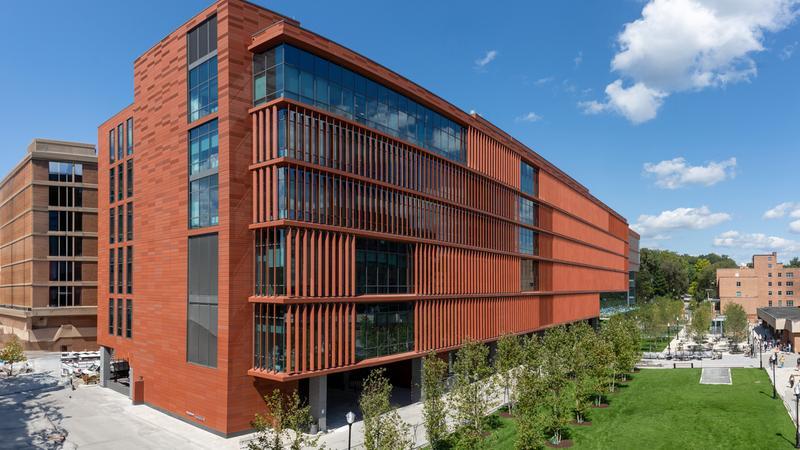The 477,000 square foot pavilion, which began construction in 2017, was made possible by the continued partnership between Georgetown University and MedStar Health and the support of donors such as the Verstandig Family Foundation, which made a $50 million gift to the project. The pavilion welcomes patients to an expanded emergency department, new operating rooms and a host of other medical resources.
According to Dr. Lisa Boyle, president of the MedStar Georgetown University Hospital, the new pavilion strengthens the hospital and university’s commitment to the Jesuit value of care.
“Our hope is that patients from this region and beyond will be touched by this world-class facility and the world-class team that will care for them. We know that healthcare evolves and changes with technology and this facility has a very flexible design which allows us to adapt to whatever those changes may be,” Boyle wrote to The Hoya.
The expanded emergency department, which nearly doubled in size from 14,000 to 27,000 square feet, features 32 large, private rooms where patients and their loved ones can connect.
The Verstandig Pavilion also introduces the use of the Intraoperative MRI System (IMRIS) suite, allowing neurosurgeons to precisely carry out critical operations and minimize patients’ need for additional surgeries. MedStar Georgetown is now the sole hospital in the Baltimore-Washington region to have this advanced technology.
“This state-of-the-art suite at MedStar Georgetown allows for the real-time acquisition of images during brain surgery. This allows for the maximum safe resection of brain tumors for our patients,” Dr. Chris Kalhorn, director of the department of neurosurgery at MedStar Georgetown University Hospital, said in a video about new resources offered at the Verstandig Pavilion.
The Verstandig Pavilion has a floor dedicated to organ transplants, divided into donor organ preparation rooms, operating rooms and postoperative recovery rooms, prioritizing the safety and comfort of patients who need kidney, liver, small bowel, pancreas and multi-organ transplants. The design of the floor means that patients can become familiar with the medical workers providing them treatment.
“It’s one team all integrated together that these patients get to know from the moment they enter the system,” Dr. Thomas Fishbein, executive director of the MedStar Georgetown Transplant Institute, said in a video about the transplant floor at the Verstandig Pavilion.
Along with providing increased medical resources, the Verstandig Pavilion also creates opportunities for Georgetown students interested in healthcare and medicine. Notably, the Verstandig Pavilion fosters training in specialties related to complex diseases, such as oncology, gastroenterology, neurology and orthopaedics.
According to Roberta Waite, dean of the Georgetown University School of Nursing, students can gain real-world experience in conducting medical research and providing clinical care under the guidance of experienced medical researchers and practitioners.
“During their education, students pursuing a bachelor of science degree in nursing (BSN) have the opportunity to learn in this state-of-the-art facility, which means they’ll work with the most advanced technologies available in a hospital environment. It’s a perfect match of high tech and high touch in the education of the Georgetown nurse,” Waite wrote to The Hoya.
The Verstandig Pavilion is located next to the Georgetown University Medical Center and brings six acres of pedestrian-friendly green space to Georgetown community members, including walkways, benches, bike racks and a gathering area. The green space extends from Reservoir Road to the Leavey Center, as well as from Reservoir Road to the front of St. Mary’s Hall.
According to Georgetown President John J. DeGioia (CAS ’79, GRD ’95), the Verstandig Pavilion represents the strong connection between medical practitioners and patients, but also between Georgetown community members as a whole.
“In this new space, we also acknowledge the importance of the community – the many physicians, researchers, nurses, caregivers and students whose combined efforts support and shape education, research and health care,” DeGioia said at the opening ceremony of the pavilion.

